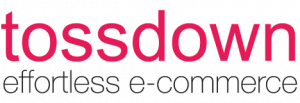Do you want to start your own grocery ecommerce business?
The comfort and convenience of online grocery shopping has urged more and more consumers to buy online. This presents a unique opportunity for startups and new ventures in the food & beverage industry who are aware that having a digital presence is now more important than ever. And since grocery items have high demand and high profit margins, it means you’re likely to have a potentially profitable business on your hands.
What is an online grocery store?
An online grocery store is a retail business that allows the sale and purchase of groceries and household items through the internet. Customers can browse through different categories including cooking ingredients, frozen items, bakery items & snacks, and drinks & beverages virtually and add them to a virtual shopping cart before checking out.
The items ordered will then be delivered to the customers’ doorstep with cash on delivery (COD) or through credit/debit card payment gateways based on the chosen method of payment.
Why should you start an online grocery store?
There are several reasons why you should start an online grocery business. Grocery spending is the biggest and most steady expenditure of any Canadian family. This means you can target a much wider audience with a variety of products and convenient delivery options.
Other reasons include:
- Growing demand for online grocery shopping in the aftermath of the COVID-19 pandemic.
- High profit margins due to brand loyalty and limited competition.
- Customer insights help you determine the products that drive most sales and help personalize the shopping experience.
- Flexible point of contact so customers can place orders at any time of the day.
- Low operating costs such as rent, utilities, and repair and maintenance.
Tips on starting your online grocery business:
Wondering what the next step is? We’re here to help you. You can build a website for your online grocery business to capture this booming market by booking a free consultation with us. But to start your online grocery business, you have to keep in mind the following.
1. Set up your online store
Before you start selling online, you need to thoroughly research ecommerce platforms that best suit your business needs and requirements. To get your online business started, you need to first develop your website and then register your domain name and business.
- Develop your website & mobile app to make sales and fulfill orders. Find an affordable ecommerce platform like tossdown with efficient inventory management solutions and real-time data processing.
- Register your domain name once you’ve set up your website. This makes it easier for your customers to find you and for you to distinguish yourself from competitors.
- Register your business so your website can start bringing in revenue. To learn more about Canadian taxes for businesses you can visit the Government of Canada CRA website.
2. Find your niche
Research the market and identify trends and patterns in consumer needs to define your target audience. You can do competitor research of other online grocery brands operating in your region but this one takes some trial and error. Once operations begin, you can collect customer data to give you insight into the items that are in demand to create personalized experiences for customers such as product recommendations and targeted marketing campaigns.
3. Decide the delivery region
More and more customers are steering clear of traditional brick and mortar grocery stores and choosing to shop online. To meet the demands of your target audience, select an area where you can quickly deliver to them, especially if you’re promising same-day delivery.
4. Manage your supply chain
Managing your supply chain is absolutely critical, especially for perishables like grocery items. Make sure you have an efficient back-end supply chain to store and ship your products. Locate potential suppliers and determine their accessibility to meet customer demand.
5. Choose the method of payment
You can go for cash on delivery (COD) or online payment via debit or credit cards. Both methods have their own advantages and disadvantages and the one you choose depends on your target audience and specific business needs and requirements.


